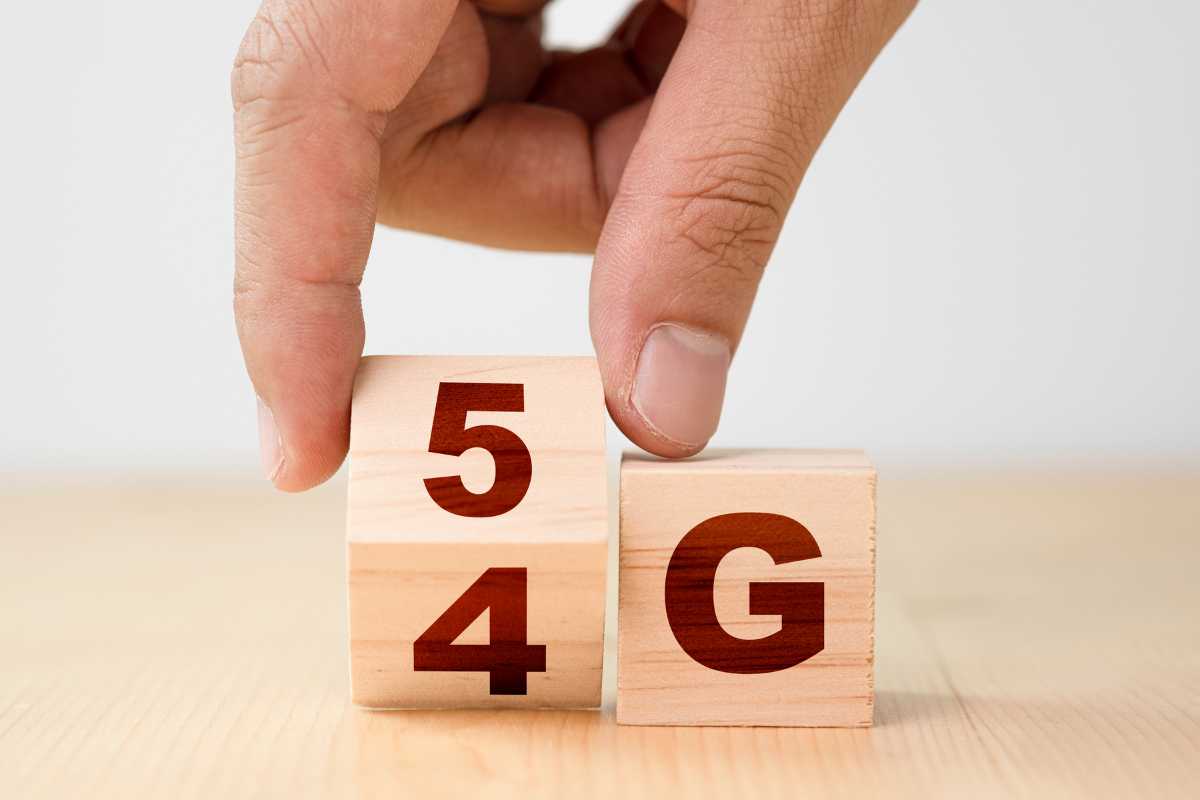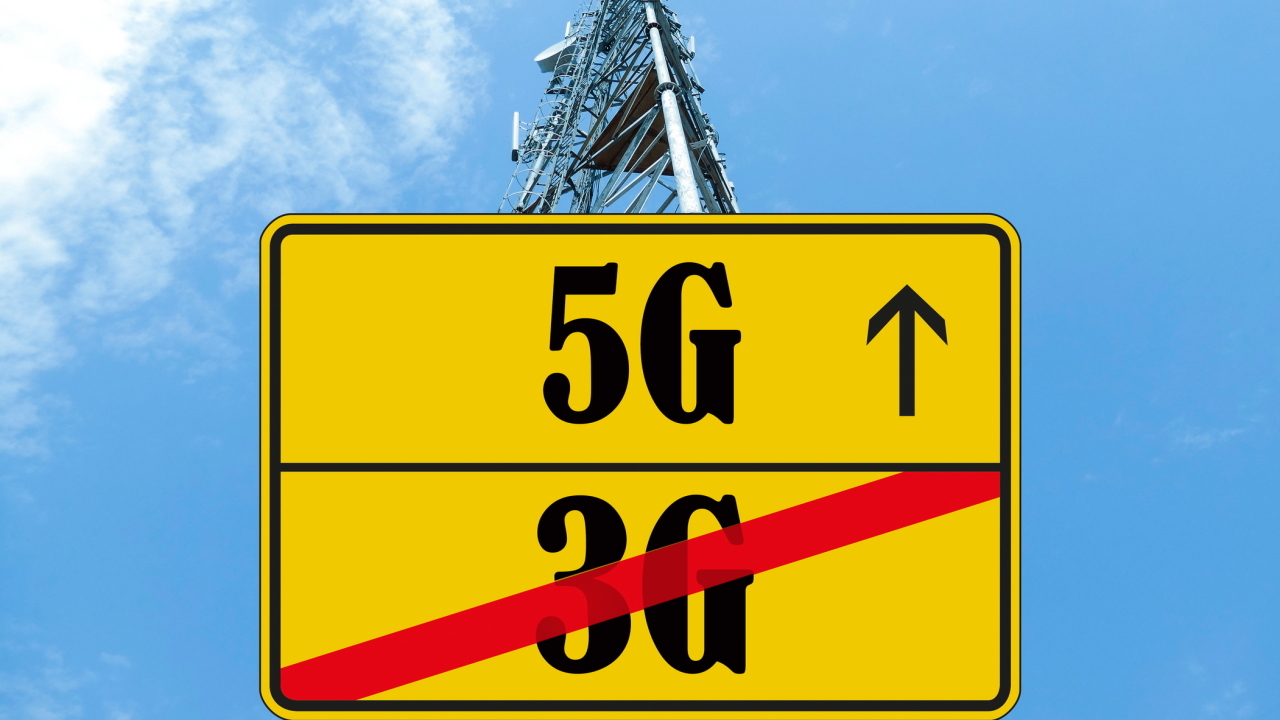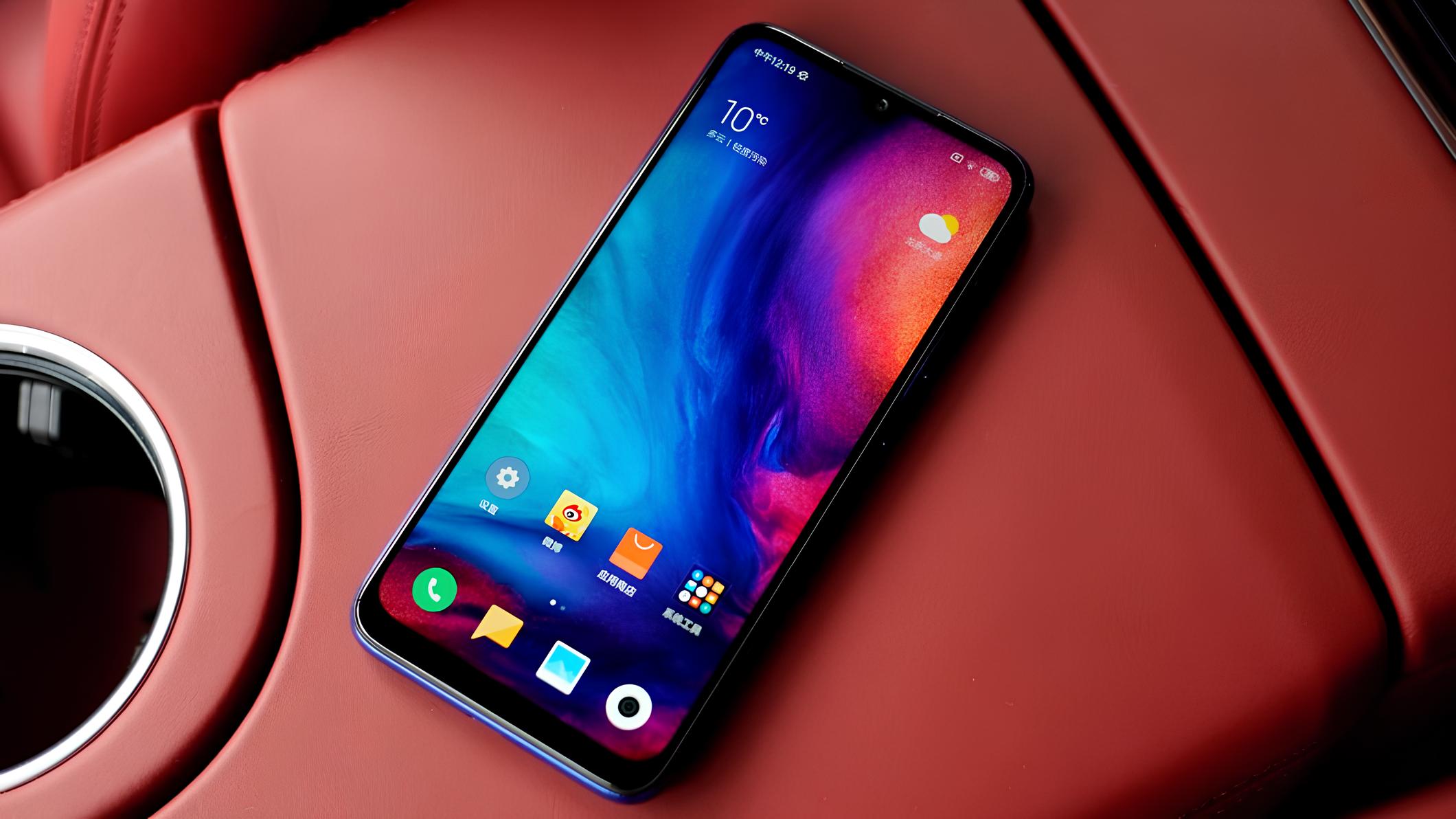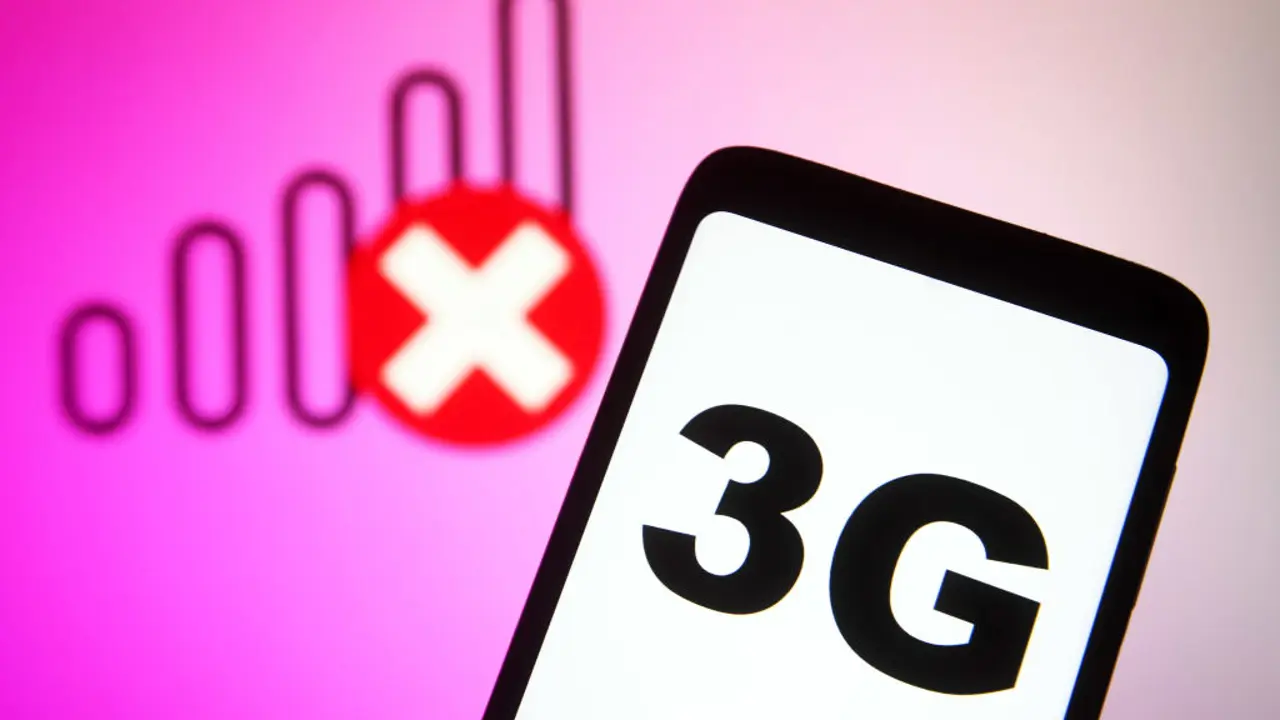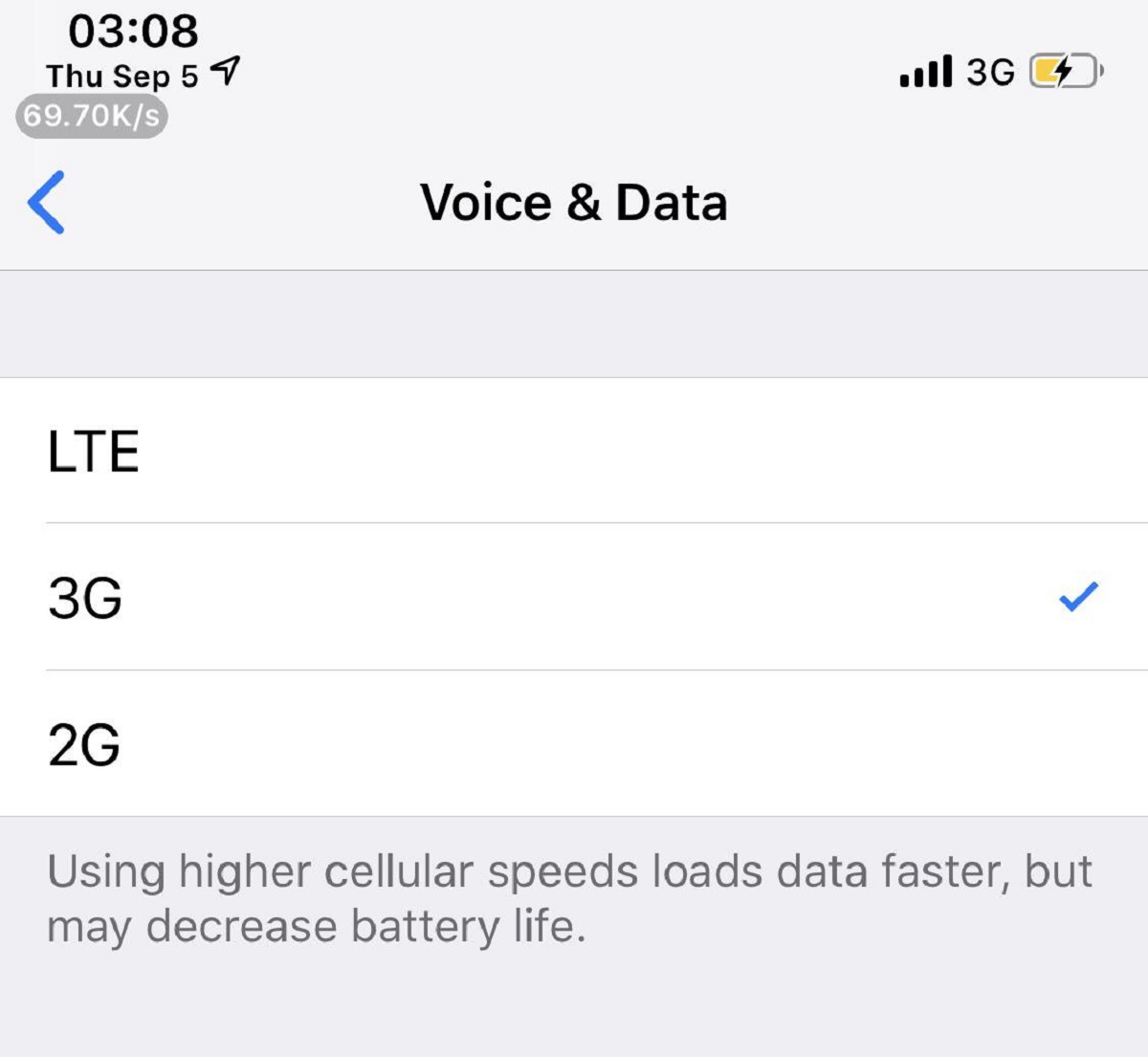Introduction
As technology continues to evolve, we are constantly witnessing the introduction of new and improved innovations. In the realm of mobile communication, the transition from 3G to 4G was a monumental leap forward, offering faster internet speeds, enhanced connectivity, and improved experiences for users around the world. However, as the demand for even greater speed and capacity grows, the spotlight is now shifting towards the arrival of 5G, the next generation of wireless technology.
With the hype surrounding 5G, many people have started to wonder about the fate of 4G. Will it continue to coexist with its successor, or will it eventually be phased out? In this article, we will explore the potential timeline and factors that may influence the phasing out of 4G, as well as how this transition could affect consumers.
Before we delve into the future of 4G, let’s first understand what exactly it is. 4G, also known as the fourth generation of mobile networks, revolutionized the way we communicate and access information on our smartphones and other connected devices. It brought about remarkable improvements in terms of speed, reliability, and overall performance compared to its predecessor, 3G.
With 4G, users were able to enjoy faster download and upload speeds, seamless video streaming, and enhanced gaming experiences. This technological advancement paved the way for a plethora of new applications and services, such as video conferencing, virtual reality, and the Internet of Things (IoT).
However, as technology evolves at an exponential rate, the need for faster, more efficient, and more reliable networks becomes increasingly important. This is where 5G comes into play. With the potential to deliver lightning-fast speeds, ultra-low latency, and support for a massive number of connected devices, 5G promises to unlock a whole new world of possibilities.
As mobile network operators and technology companies ramp up their efforts to deploy 5G networks worldwide, it is natural to wonder what will happen to the existing 4G infrastructure. Will it be completely replaced, or will it continue to coexist alongside 5G? To answer these questions, it is important to consider the advantages and challenges associated with 5G implementation, as well as the potential factors that may influence the phasing out of 4G.
What is 4G?
4G, or the fourth generation of mobile networks, represents a significant advancement in wireless telecommunications technology. It offers a host of improvements over its predecessors, particularly in terms of speed, reliability, and overall performance.
With 4G, users can experience faster download and upload speeds compared to previous generations. This means that tasks such as streaming high-definition videos, downloading large files, and browsing the internet are more efficient and seamless. Activities that were once cumbersome, like video conferencing and online gaming, have become smoother and more enjoyable thanks to the enhanced bandwidth capabilities of 4G networks.
One of the key features of 4G is its low latency, or the time it takes for data to travel from one point to another. Low latency is crucial for real-time applications, such as video calling and online gaming, as it minimizes delays and ensures a smoother and more responsive user experience.
In addition to speed and low latency, 4G also supports a large number of simultaneous connections. This means that multiple devices can connect to the network at the same time without experiencing a significant drop in performance. With the rise of the Internet of Things (IoT) and the increasing number of connected devices in our daily lives, this ability to handle multiple connections is essential.
Moreover, 4G offers improved network coverage, reaching more remote and rural areas compared to previous generations. This expanded coverage ensures that users can access high-speed internet even in areas where wired connectivity may be limited.
Overall, 4G has revolutionized the way we use our smartphones and other connected devices. It has made it possible for us to stay connected, access information, and enjoy multimedia content on the go with unprecedented convenience and speed.
However, as the demand for more advanced and capable networks continues to grow, the mobile industry has set its sights on the next generation of wireless technology: 5G. This raises questions about the future of 4G and whether it will eventually be phased out to make way for the new, more powerful networks.
In the following sections, we will explore the push for 5G, the advantages it brings, the challenges of its implementation, and the potential factors that may influence the phasing out of 4G.
The Push for 5G
With the increasing demand for faster, more reliable, and more efficient connectivity, the mobile industry has been working tirelessly to develop and deploy 5G networks. 5G, or the fifth generation of mobile networks, is set to revolutionize the way we connect, communicate, and interact with the world around us.
One of the primary drivers behind the push for 5G is the exponential growth of data consumption. The proliferation of connected devices, the popularity of streaming services, and the rise of data-intensive applications such as augmented reality and virtual reality have contributed to a significant increase in data traffic. 5G aims to address this surge in demand by providing enhanced capacity and faster speeds, ensuring that users can access and transmit data seamlessly, even in densely populated areas.
Another key factor driving the push for 5G is the need for ultra-low latency. In certain applications, such as autonomous vehicles and remote robotic surgery, even the smallest delay can have significant consequences. 5G networks promise to deliver ultra-low latency, enabling real-time communication and more responsive interactions between devices and systems.
In addition to speed and low latency, 5G offers greater network reliability and higher network efficiency. With advanced technologies such as network slicing and edge computing, 5G networks can provide dedicated portions of the network for specific use cases, ensuring optimal performance and customized services. This opens up new possibilities for industries such as healthcare, manufacturing, and transportation, where reliability and efficiency are crucial.
Furthermore, 5G networks have the ability to support a massive number of connected devices. With the growth of the Internet of Things (IoT) and the emergence of smart cities, smart homes, and smart industries, the demand for a network that can handle billions of connected devices simultaneously is paramount. 5G’s capabilities in this area make it the ideal technology to power the future of IoT and enable seamless connectivity between devices and systems.
The push for 5G is not limited to technology companies and network operators. Governments around the world have recognized the potential of 5G to drive economic growth, empower digital transformation, and enhance various sectors such as healthcare, transportation, and agriculture. As a result, they are actively supporting the development and deployment of 5G infrastructure through policy initiatives and investments.
Overall, the push for 5G stems from the need for faster speeds, lower latency, higher reliability, increased network efficiency, and the ability to support a massive number of connected devices. These advancements will unlock new possibilities and enable transformative applications and services that will reshape industries and improve the way we live and work.
In the next section, we will explore the advantages that 5G brings and the challenges associated with its implementation.
The Advantages of 5G
5G, the next generation of wireless technology, brings a plethora of advantages that will have a profound impact on how we connect, communicate, and interact with the digital world. Let’s explore some of the key advantages of 5G:
1. Lightning-fast speeds: 5G is expected to deliver significantly faster speeds compared to its predecessor, 4G. With download speeds of up to 10 gigabits per second, users will be able to download large files, stream high-definition content, and engage in real-time applications without any lag or buffering. This blazing-fast speed will revolutionize industries such as media, entertainment, gaming, and e-commerce.
2. Ultra-low latency: 5G aims to reduce the latency, or the delay between sending and receiving data, to unprecedented levels. With latency as low as 1 millisecond, 5G networks will enable real-time interactions between devices, making applications like autonomous vehicles, remote surgery, and virtual reality more reliable and responsive than ever before.
3. Massive connectivity: 5G has been designed to support a massive number of connected devices in a given area. This capability is essential for the growth of the Internet of Things (IoT) and the connected world. With 5G, smart cities, smart homes, and smart industries will become a reality, as billions of devices seamlessly communicate with each other, enabling more efficient and sustainable living.
4. Enhanced network capacity: 5G networks have significantly greater capacity compared to previous generations. This means that more users can connect simultaneously without experiencing a drop in performance. The increased network capacity will cater to the growing demand for data-intensive applications and services, ensuring a seamless experience even in densely populated areas and crowded events.
5. Improved energy efficiency: 5G networks are designed to be more energy-efficient, consuming less power per unit of data transmitted. This is achieved through advanced network management techniques and intelligent algorithms that optimize energy usage. The improved energy efficiency of 5G will contribute to a greener and more sustainable future.
6. Unleashing new technologies: 5G networks will act as a catalyst for the development and deployment of transformative technologies. From augmented reality (AR) and virtual reality (VR) to artificial intelligence (AI) and machine learning (ML), 5G will unlock new possibilities and revolutionize industries such as healthcare, transportation, education, and entertainment.
These advantages of 5G will not only enhance our daily lives but also revolutionize various industries, improve productivity, and pave the way for new business opportunities. However, the implementation of 5G does come with its fair share of challenges, which we will explore in the next section.
The Challenges of 5G Implementation
While the promises of 5G are enticing, the implementation of this revolutionary technology is not without its challenges. Let’s explore some of the key challenges that need to be addressed in order to successfully deploy and maximize the benefits of 5G:
1. Infrastructure requirements: 5G networks require a robust infrastructure, including a dense network of small cells, antennas, and fiber optic cables. Upgrading and expanding the existing infrastructure to support 5G can be a complex and costly process. Building the necessary infrastructure, especially in rural and remote areas, poses a significant challenge that requires substantial investments and coordination among multiple stakeholders.
2. Spectrum availability: 5G relies on specific frequency bands known as spectrum to transmit data. Securing an adequate amount of spectrum for 5G networks can be challenging, as the spectrum is a limited resource and in high demand. Governments and regulatory bodies play a crucial role in ensuring that the necessary spectrum is allocated and licensed to operators in a fair and efficient manner.
3. Interference and signal propagation: The higher-frequency bands used by 5G have shorter wavelengths and are more susceptible to interference from obstacles such as buildings and trees. This can result in reduced signal propagation and coverage, especially in urban environments. Addressing these challenges requires innovative solutions like beamforming and advanced antenna technologies to overcome interference and ensure reliable connectivity.
4. Compatibility with existing infrastructure: Transitioning from 4G to 5G involves ensuring backward compatibility with existing infrastructure and devices. The coexistence of different generations of networks can pose interoperability challenges and require upgrades or replacements of equipment to fully leverage the capabilities of 5G. Ensuring a seamless transition and compatibility between networks is crucial for a successful deployment of 5G.
5. Security and privacy: The increased connectivity and data exchange facilitated by 5G networks also raise concerns about security and privacy. With more devices and endpoints connected to the network, the attack surface for potential cyber threats expands. Ensuring robust security measures, encryption protocols, and data privacy regulations will be essential to protect users and their sensitive information in the 5G era.
6. Maturity of ecosystem and devices: The widespread adoption and utilization of 5G depend on the availability and maturity of devices and applications that can leverage its capabilities. As the technology continues to evolve, fostering an ecosystem that supports 5G-enabled devices, applications, and services will be crucial. This involves collaboration between device manufacturers, application developers, and network operators to bring innovative products and services to the market.
Overcoming these challenges will require collaboration and investment from governments, network operators, technology providers, and other stakeholders. Only through concerted efforts and proactive planning can the potential of 5G be fully realized, bringing about a new era of connectivity and transforming industries across the globe.
In the next section, we will explore the potential phasing out of 4G and the factors that may influence this transition.
The Potential Phasing Out of 4G
With the rapid advancement of technology and the arrival of 5G, the question arises: will 4G eventually be phased out? While it is difficult to make definitive predictions, there are several factors that suggest a potential phasing out of 4G networks:
1. Evolution of technology: As technology progresses, older generations of networks are often replaced by newer, more advanced ones. This has been the case with previous generations like 2G and 3G, which have been largely phased out in favor of faster and more efficient networks. With the advent of 5G, a similar pattern may occur, leading to a gradual phasing out of 4G networks over time.
2. Spectrum allocation: Spectrum is a valuable resource for mobile networks, and governments allocate specific bands for different generations of networks. As more spectrum is assigned to 5G networks, the available spectrum for 4G may decrease, making it less attractive for network operators to invest in expanding and maintaining 4G infrastructure. This could accelerate the phasing out of 4G in favor of 5G networks that have access to larger portions of spectrum.
3. Consumer demand: Ultimately, the demand for faster speeds, lower latency, and more advanced capabilities will drive the transition to 5G. As consumers increasingly adopt 5G-enabled devices and services, the demand for 4G may decline, leading network operators to shift their focus and resources towards expanding and improving 5G infrastructure. If the majority of consumers are using 5G, it becomes less economically viable to invest in 4G networks, potentially leading to a phased withdrawal of 4G services.
4. Market competition: Market dynamics and competition among network operators can also influence the phasing out of 4G networks. If one operator successfully deploys an extensive and reliable 5G network, it may attract a significant number of customers, putting pressure on other operators to catch up and transition to 5G sooner rather than later. This competitive landscape can accelerate the phasing out of 4G as operators strive to remain competitive and meet the evolving demands of their customers.
5. Network efficiency: 5G networks are designed to be more efficient in terms of energy consumption and bandwidth usage compared to 4G networks. This increased efficiency can incentivize network operators to prioritize the deployment and expansion of 5G networks, as they offer better resource utilization and improved overall network performance. Over time, this efficiency advantage may prompt network operators to phase out 4G in favor of 5G to streamline their operations and maximize network efficiency.
While the potential phasing out of 4G seems likely, it is important to note that the exact timeline and extent of this transition may vary across different regions and operators. In some areas, particularly in rural or less developed regions, 4G networks may continue to coexist with 5G for an extended period, ensuring wider coverage and connectivity options for consumers.
In the following section, we will explore the factors that may influence the timeline for phasing out 4G and discuss how this transition could affect consumers.
Factors That May Influence the Phasing Out of 4G
Several factors may influence the timeline for the phasing out of 4G networks and the transition to 5G. These factors vary depending on technological, economic, and market conditions. Let’s explore some of the key factors that may influence the phasing out of 4G:
1. Network coverage and adoption: One of the determining factors for the phasing out of 4G is the extent of network coverage and adoption of 5G. In areas where 5G coverage is limited, network operators may continue to support and maintain 4G networks to ensure widespread connectivity. Additionally, the rate of adoption of 5G-enabled devices and services by consumers plays a crucial role in the gradual phasing out of 4G.
2. Infrastructure readiness: The availability and readiness of 5G infrastructure can heavily influence the speed at which 4G is phased out. Network operators need to invest in building and upgrading infrastructure to support 5G, including the deployment of small cells, the installation of new antennas, and the expansion of fiber optic networks. The pace of infrastructure development and the ability to transition smoothly from 4G to 5G will determine the progress of the phasing out process.
3. Spectrum availability and allocation: Spectrum availability is a critical factor in the rollout of 5G networks. The allocation and availability of spectrum for 5G will determine the capacity and performance of the network. As more spectrum is made available for 5G, network operators may prioritize the deployment of 5G infrastructure, leading to a gradual reduction of resources dedicated to 4G. However, the efficient allocation of spectrum and regulatory policies will play a significant role in facilitating a smooth transition.
4. Economic viability: The economic viability of maintaining and upgrading 4G networks versus investing in 5G infrastructure is a crucial factor in the phasing out process. Network operators need to evaluate the cost-benefit analysis of continuing 4G operations compared to the potential benefits of 5G. Factors such as customer demand, revenue streams, and profitability will impact the decision-making process, influencing the timing and extent of the phasing out of 4G.
5. Market competition and demand: The competitive landscape and market demand can accelerate the phasing out of 4G. If consumers increasingly adopt 5G devices and services and if one network operator gains a competitive advantage by early and extensive deployment of 5G, other operators may face the pressure to catch up and transition to 5G sooner. Market demand for faster speeds, lower latency, and advanced capabilities will also impact the prioritization of resources towards 5G deployment, potentially expediting the phasing out of 4G.
6. Technological advancements: The pace of technological advancements and innovations in the field of telecommunications can also influence the phasing out of 4G. If new generations of wireless technology emerge, surpassing the capabilities and benefits of 4G and 5G, it may accelerate the obsolescence of 4G networks. However, this factor is more speculative and could occur in the long-term future beyond the transition from 4G to 5G.
While these factors play a significant role in shaping the phasing out of 4G, the timeline and extent of the transition will vary among different regions, network operators, and market conditions.
In the next section, we will explore how the phasing out of 4G and the adoption of 5G may impact consumers.
The Timeline for Phasing Out 4G
As the world transitions towards 5G, the timeline for phasing out 4G networks will depend on various factors, including technological advancements, infrastructure readiness, market demand, and regulatory policies. While it is challenging to provide an exact timeline, we can make some general observations:
Short-term: In the short term, we can expect 4G networks to continue operating and coexist alongside newly deployed 5G networks. This is especially true in areas where 5G infrastructure is still in the early stages of deployment or where 5G coverage is limited. During this time, network operators will focus on expanding 5G coverage and encouraging the adoption of 5G-enabled devices and services.
Mid-term: Over the next few years, we can anticipate a gradual shift towards 5G as the primary network technology. As the coverage and capabilities of 5G networks improve, network operators may start reallocating resources from 4G towards expanding and optimizing 5G infrastructure. This transition will likely be influenced by factors such as market demand, economic viability, spectrum availability, and competition.
Long-term: In the long term, as 5G becomes more mature and widespread, the phasing out of 4G will likely accelerate. Network operators may begin to decommission older 4G infrastructure, prioritize 5G investments, and allocate more spectrum to support the advanced capabilities of 5G networks. However, the complete phasing out of 4G will depend on factors such as the progression of technology, regulatory policies, and the evolution of market demand for higher-speed and more advanced connectivity options.
It’s important to note that the timeline for phasing out 4G will not be uniform across all regions and network operators. Factors such as infrastructure development, economic considerations, and regulatory environments may vary, resulting in differing timelines. Additionally, certain areas, especially rural and remote regions, may rely on 4G networks for an extended period until the deployment of 5G infrastructure is more feasible.
As the transition from 4G to 5G takes place, network operators will need to ensure a smooth and seamless migration for consumers. This includes offering affordable and compelling 5G-enabled devices, expanding 5G coverage, and providing support for consumers who may still be using 4G devices during the transition period.
In the following section, we will discuss how the phasing out of 4G and the adoption of 5G may impact consumers in terms of their connectivity, device compatibility, and overall user experience.
How Will the Phasing Out Affect Consumers?
The phasing out of 4G networks and the adoption of 5G will have a significant impact on consumers, influencing their connectivity options, device compatibility, and overall user experience. Let’s explore some of the key ways in which consumers may be affected:
1. Enhanced connectivity: One of the major benefits of 5G is its ability to provide faster speeds, lower latency, and seamless connectivity. As 5G networks become more widespread, consumers can expect a substantial improvement in their overall connectivity experience. This means faster download and upload speeds, smoother video streaming, and more responsive real-time applications.
2. Expanded capacity and reliability: 5G networks are designed to support a massive number of connected devices, which means consumers will have more bandwidth available to them. This increased capacity will alleviate network congestion, ensuring a seamless connection even in densely populated areas or during peak usage times. Additionally, 5G networks provide enhanced reliability, minimizing dropped calls and interrupted connections.
3. Compatibility with advanced technologies: As 5G becomes the dominant network technology, manufacturers will prioritize the development and production of devices that are compatible with 5G networks. This means consumers will have access to a wider range of 5G-enabled smartphones, tablets, wearables, and other connected devices. These devices will be equipped with the necessary antennas and modems to leverage the advanced capabilities of 5G, unlocking transformative technologies such as augmented reality, virtual reality, and IoT applications.
4. Network coverage considerations: During the transition phase from 4G to 5G, consumers should be aware of network coverage considerations. While 5G coverage will continue to expand, some areas may experience limited or no 5G coverage initially. Consumers living in such areas may still have to rely on 4G networks for their connectivity needs. It is crucial for consumers to check network coverage maps and consider this aspect when choosing their devices and service providers.
5. Device compatibility: As 5G evolves, there may be challenges with device compatibility. Older 4G-only devices may not be compatible with 5G networks, requiring consumers to upgrade their devices in order to take full advantage of 5G connectivity. However, network operators and manufacturers are working to ensure backward compatibility, allowing seamless transitions for consumers who are still using 4G devices during the phasing out period.
6. Affordability and pricing: Initially, 5G-enabled devices and services may carry a higher price tag compared to their 4G counterparts. However, as 5G adoption becomes more widespread and economies of scale come into effect, the cost of 5G devices and services are expected to decrease. Consumers should consider their budget and weigh the benefits of upgrading to 5G and its associated costs, keeping in mind that 4G networks will coexist for a period to ensure continued connectivity for all consumers.
In summary, the phasing out of 4G and the adoption of 5G will bring significant improvements in connectivity, expanded capacity, and compatibility with advanced technologies. However, it’s important for consumers to consider network coverage, device compatibility, and pricing factors to make informed decisions about their connectivity options and device upgrades during this transitional period.
In the concluding section, we will summarize the key points discussed in this article regarding the potential phasing out of 4G and the advent of 5G networks.
Conclusion
The advent of 5G networks marks an exciting phase in the evolution of mobile communication. As we explore the potential phasing out of 4G and the adoption of 5G, it is clear that significant changes lie ahead for consumers.
4G has revolutionized the way we connect, communicate, and interact with our devices. It has provided faster speeds, improved reliability, and enhanced connectivity options. However, as technology advances and the demand for more advanced capabilities grows, the transition to 5G becomes inevitable.
5G brings with it a multitude of advantages, including faster speeds, lower latency, and massive connectivity. Its implementation, however, is not without challenges. Building the necessary infrastructure, allocating spectrum, and ensuring backward compatibility are key considerations during this transition.
The timeline for phasing out 4G networks will vary across regions and operators. In the short term, 4G will continue to coexist with 5G, gradually giving way as 5G coverage expands and adoption increases. Factors such as infrastructure readiness, market competition, and technological advancements will influence the pace of this transition.
As consumers navigate the phasing out of 4G and the adoption of 5G, they can expect enhanced connectivity, expanded capacity, and greater compatibility with advanced technologies. While some challenges, such as network coverage and device compatibility, may arise, the benefits of 5G will outweigh these obstacles over time.
Ultimately, the phasing out of 4G and the adoption of 5G will bring unprecedented opportunities for innovation, productivity, and connectivity. It will transform industries, enable new applications and services, and reshape the way we live and work. As consumers, staying informed about the advancements in 5G, evaluating our connectivity options, and making informed decisions will be crucial to fully leverage the capabilities of this next generation of wireless technology.
With 5G on the horizon, we can look forward to a future that is faster, more connected, and brimming with possibilities.







